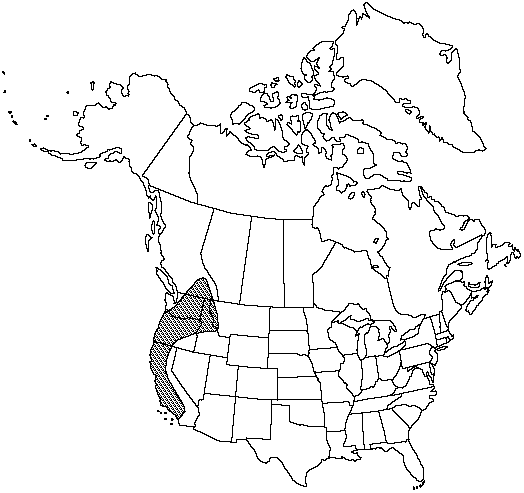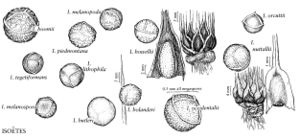Isoëtes howellii
Trans. Acad. Sci. St. Louis 4: 385. 1882.
Plants becoming terrestrial. Rootstock nearly globose, 2-lobed. Leaves deciduous, bright green, pale to brown or lustrous black toward base, spirally arranged, to 25 cm, pliant, gradually tapering to tip. Velum covering less than 1/2 of sporangium. Sporangium wall brown-streaked to completely brown. Megaspores white, 300–500 μm diam., obscurely tuberculate to rugulate; girdle smooth. Microspores brown in mass, 25–35 μm, spinulose. 2n = 22.
Phenology: Spores mature in late spring and summer.
Habitat: Wet depressions, vernal pools, and lake margins
Distribution

B.C., Calif., Idaho, Mont., Oreg., Wash.
Discussion
In many respects, Isoëtes howellii appears similar to I. melanopoda. Small plants with leaves less than 10 cm and megaspores less than 420 μm diam. have been called I. howellii var. minima (A. A. Eaton) N. E. Pfeiffer.
Selected References
None.
